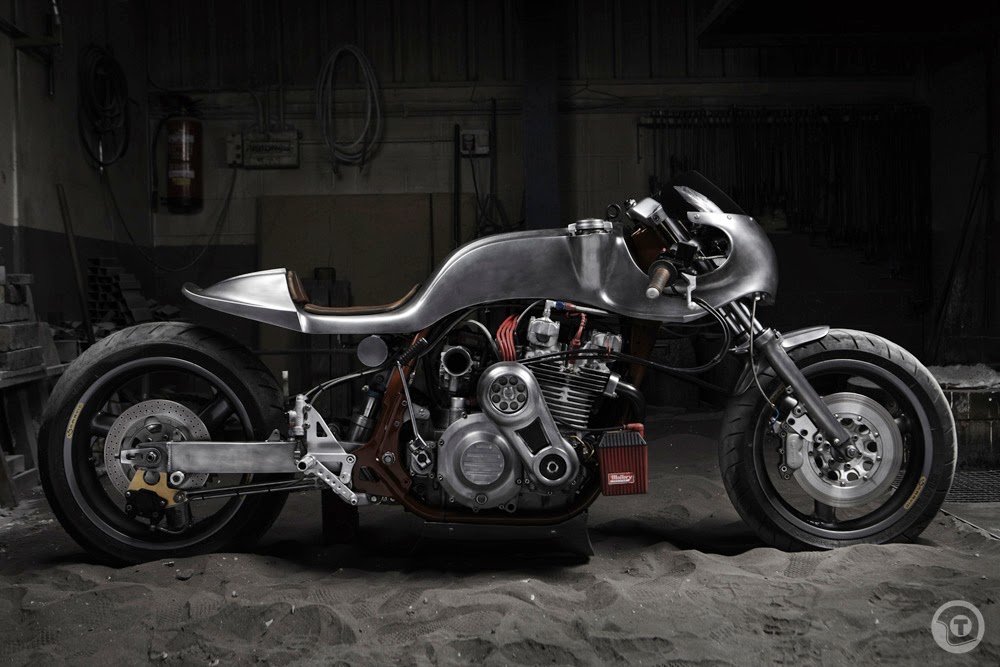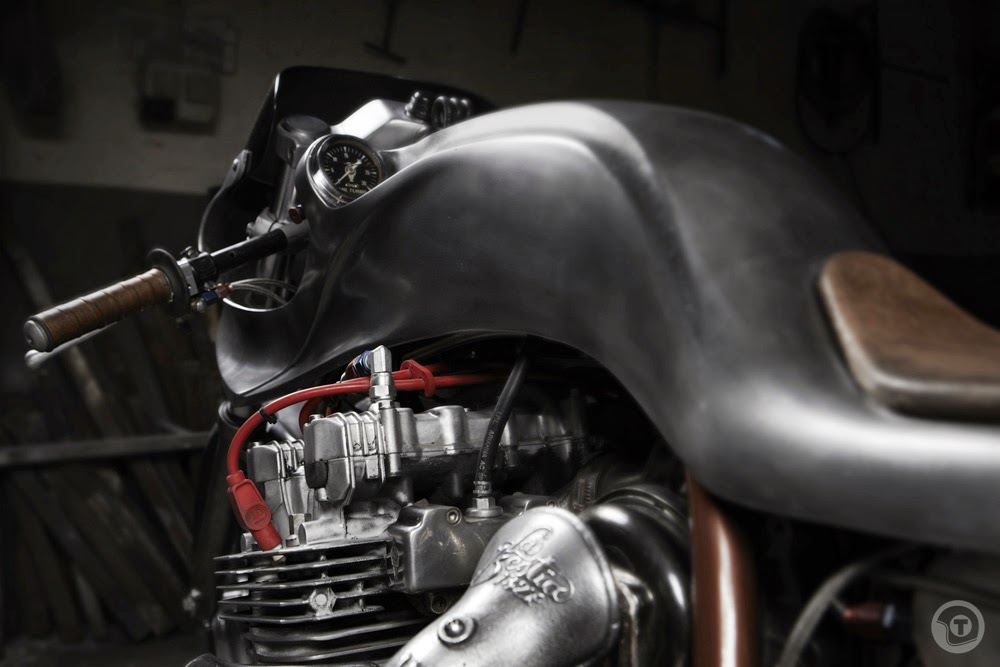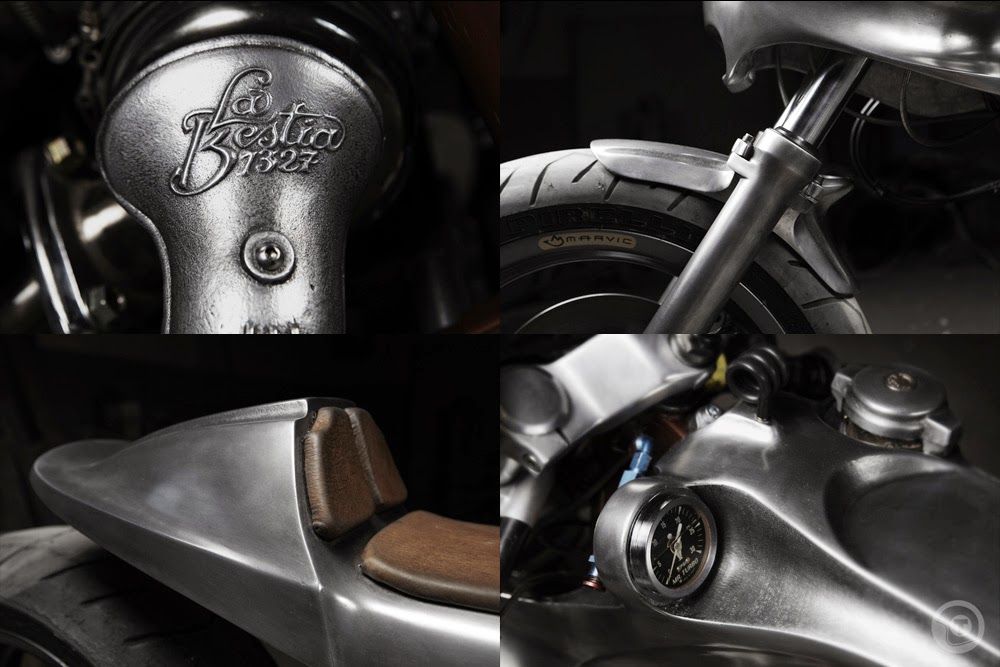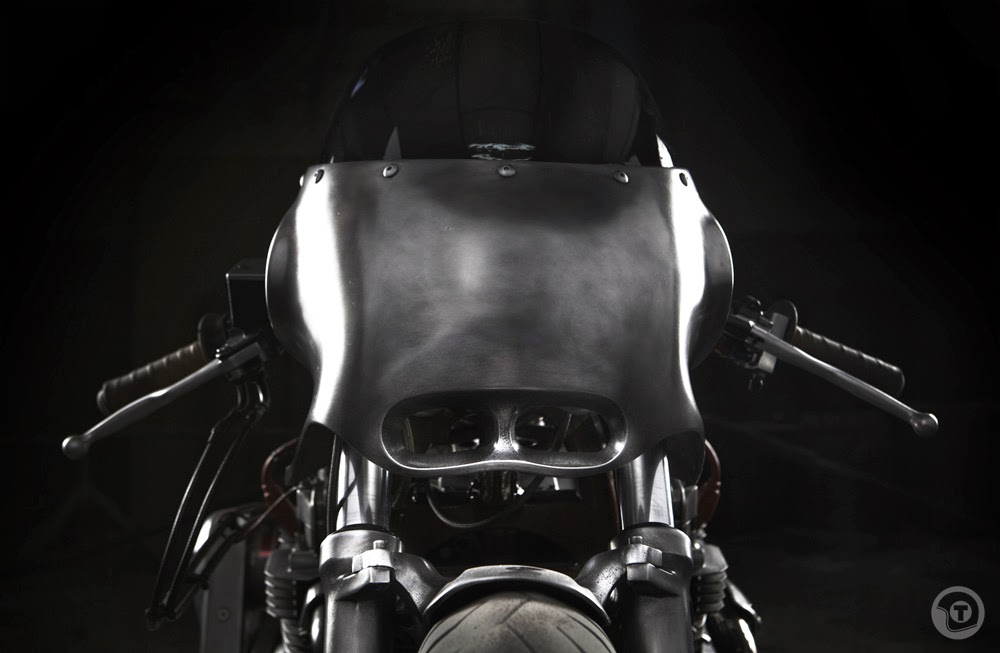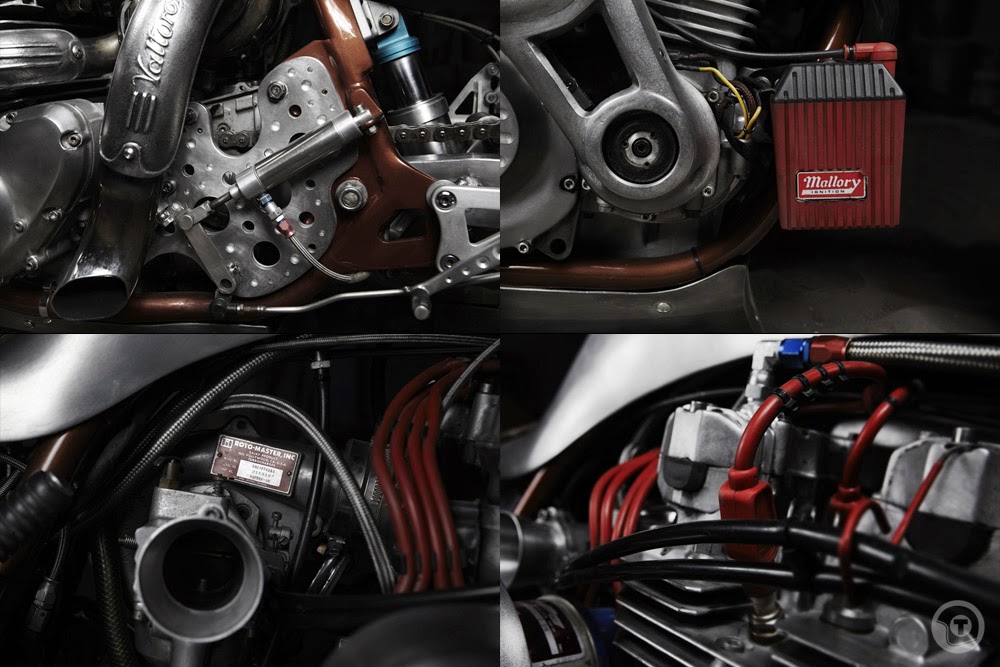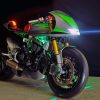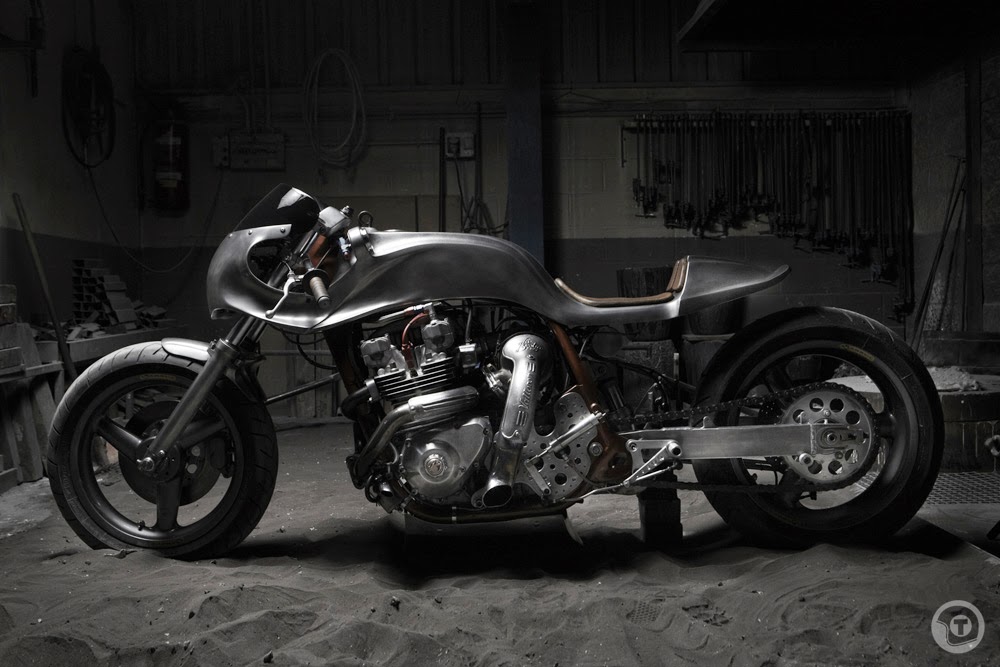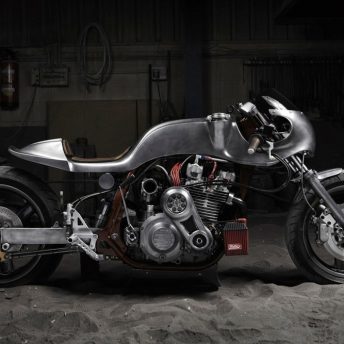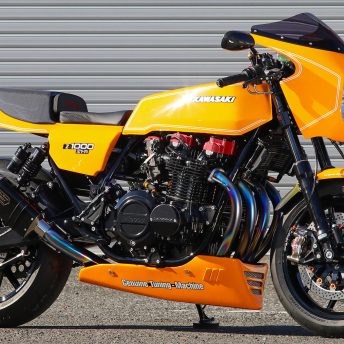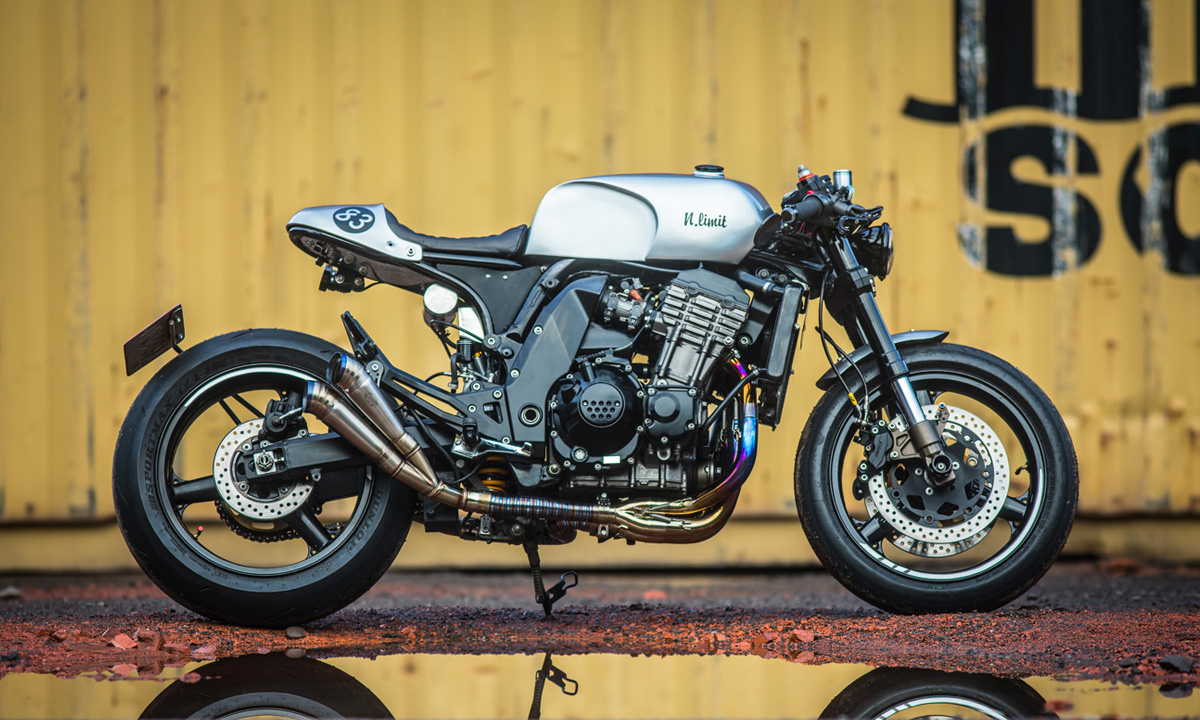Valtoron in Valdetorres de Jarama, Spain, is the workshop of two brothers, Pablo and Carlos Delgado. Since 1995 the brothers have used their skills as craftsmen to design, mould, cast and create custom motorcycles as unique as the skills the possess and ‘La Bestia’ is one of their latest builds. The following story and images are an extract from a full story that ran in Tank Moto issue 3…
“We have been passionate about motorcycles since we were children, practising almost every discipline (motocross, TT, racing, street, etc). We have restored bikes since we were very young, and we have always prepared our own bikes for competition. In 1995, we formed the company “Esculturas Bronciarte S.L.”, dedicated exclusively to artistic sculpture casting. Our father, Rafael Muyor was a sculptor, designer and painter so our lives have been closely linked to the artistic and design world.”
La Bestia entered the Valtoron workshop as a Kawasaki Z1000r ex-dragbike from the ‘80s, capable (by my estimation) of low 8 second passes on the ¼ mile. With a Z900 bottom end, a 1327cc big block with a Z1000r head, Rajay F40 Turbocharger, reinforced clutch, performance cam, crank and pistons and a trick air shifter the bike was already a beast before the brother got to work on it. To build on this solid performance base Valtoron modified the bikes frame by extending it even further to reduce any chance of unwanted wheelies. The front end was swapped out for a light and simple Yamaha FZR600 unit holding a Marvic Magnesium rim with a brembo brake caliper and KZ900 disc while in the rear another Marvic rim with a Brembo brake setup is held steady by Fournales oleopneumatic air shocks.
La Bestia’s performance may be impressive but it’s the bikes bodywork that is truly astonishing. Using clay-modeling techniques the brothers designed the initial concept for all of the different parts of the bikes bodywork. This included the monocoque body, made as one single piece from the fairing back to the cowl, the front fender, exhaust protectors, triple trees and various engine covers. From the clay models ‘rigid material’ copies were then created using silicon sand mixed with resin and a hardening catalyst. Then during the final stage of the process molten aluminium is poured into the casts where it hardens before being broken out of the molds.
The style of La Bestia’s bodywork was designed to reflect the look of the land speed bikes that visit the Bonneville salt flats each year during speedweek. The sleek lines and sweeping curves create the feeling of speed before the bikes even started to move and with the air inlets in the front it looks as though it could have been designed in a wind tunnel. Of all of the aspects of the build it was this monocoque body that took the longest to complete. After removing the piece from the sand casting countless hours were spent finishing the aluminium by hand to leave a stunningly smooth, weld free piece that mated perfectly to the Kawasaki’s frame. Valtoron then hand tooled the tiny leather seat pads mounted to the body, wrapped the handlebars using the same rich brown leather and painted the frame in a matching metallic brown.
As Pablo explained it to me the build started out simply as an idea; “As if it was a sculpture, we let the project flow and get what it demanded in every moment. The bike really is a beast as its name suggests and is created for straightline accelerations over the ¼ mile or to reach its maximum speed on a salt lake speed trial. It is not a bike created to be used on the street”. While I may not be about to go out and start pouring molten metal or installing an English wheel in my shed, I am becoming more inclined to “do it myself” as I see more of this type of build being completed. With workshops like Valtoron around to keep us inspired maybe some of you may go about learning how as well.
